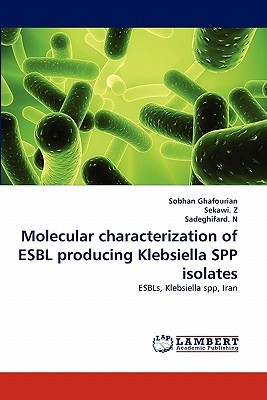
- We will send in 10–14 business days.
- Author: Sobhan Ghafourian
- Publisher: LAP Lambert Academic Publishing
- ISBN-10: 3844317317
- ISBN-13: 9783844317312
- Format: 15.2 x 22.9 x 1.3 cm, softcover
- Language: English
- SAVE -10% with code: EXTRA
Molecular characterization of ESBL producing Klebsiella SPP isolates (e-book) (used book) | bookbook.eu
Reviews
Description
ESBLs are known as extended-spectrum because they are able to hydrolyze a broader spectrum of beta- lactam antibiotics than the simple parent beta- lactamases from which they are derived. Such ESBLs have also the ability to inactivate beta-lactam antibiotics containing an oxyimino-group such as oxyimino-cephalosporins (eg; ceftazidime, ceftriaxone, cefotaxime) as well as oxyimino- monobactam. Furthermore, they are not active against cephamycins and carbapenems. Generally, they are inhibited by beta-lactamase-inhibitors such as clavulanate and tazobactam. ESBLs have been found in a wide range of Gram-negative rods. However, the vast majority of strains expressing these enzymes belong to the Enterobacteriaceae family. K.pneumoniae remains as the major ESBL-producer.
EXTRA 10 % discount with code: EXTRA
The promotion ends in 18d.18:52:07
The discount code is valid when purchasing from 10 €. Discounts do not stack.
- Author: Sobhan Ghafourian
- Publisher: LAP Lambert Academic Publishing
- ISBN-10: 3844317317
- ISBN-13: 9783844317312
- Format: 15.2 x 22.9 x 1.3 cm, softcover
- Language: English English
ESBLs are known as extended-spectrum because they are able to hydrolyze a broader spectrum of beta- lactam antibiotics than the simple parent beta- lactamases from which they are derived. Such ESBLs have also the ability to inactivate beta-lactam antibiotics containing an oxyimino-group such as oxyimino-cephalosporins (eg; ceftazidime, ceftriaxone, cefotaxime) as well as oxyimino- monobactam. Furthermore, they are not active against cephamycins and carbapenems. Generally, they are inhibited by beta-lactamase-inhibitors such as clavulanate and tazobactam. ESBLs have been found in a wide range of Gram-negative rods. However, the vast majority of strains expressing these enzymes belong to the Enterobacteriaceae family. K.pneumoniae remains as the major ESBL-producer.


Reviews